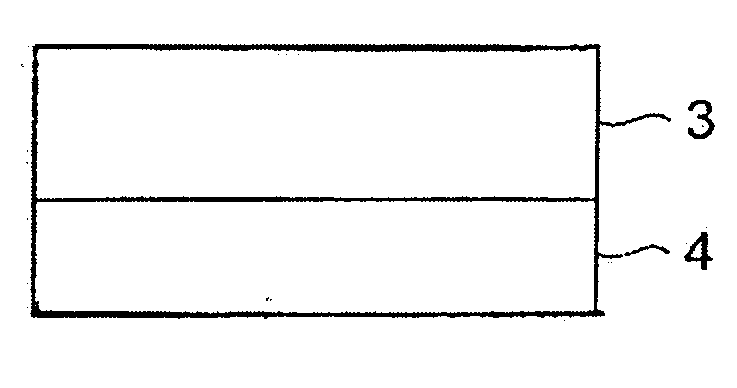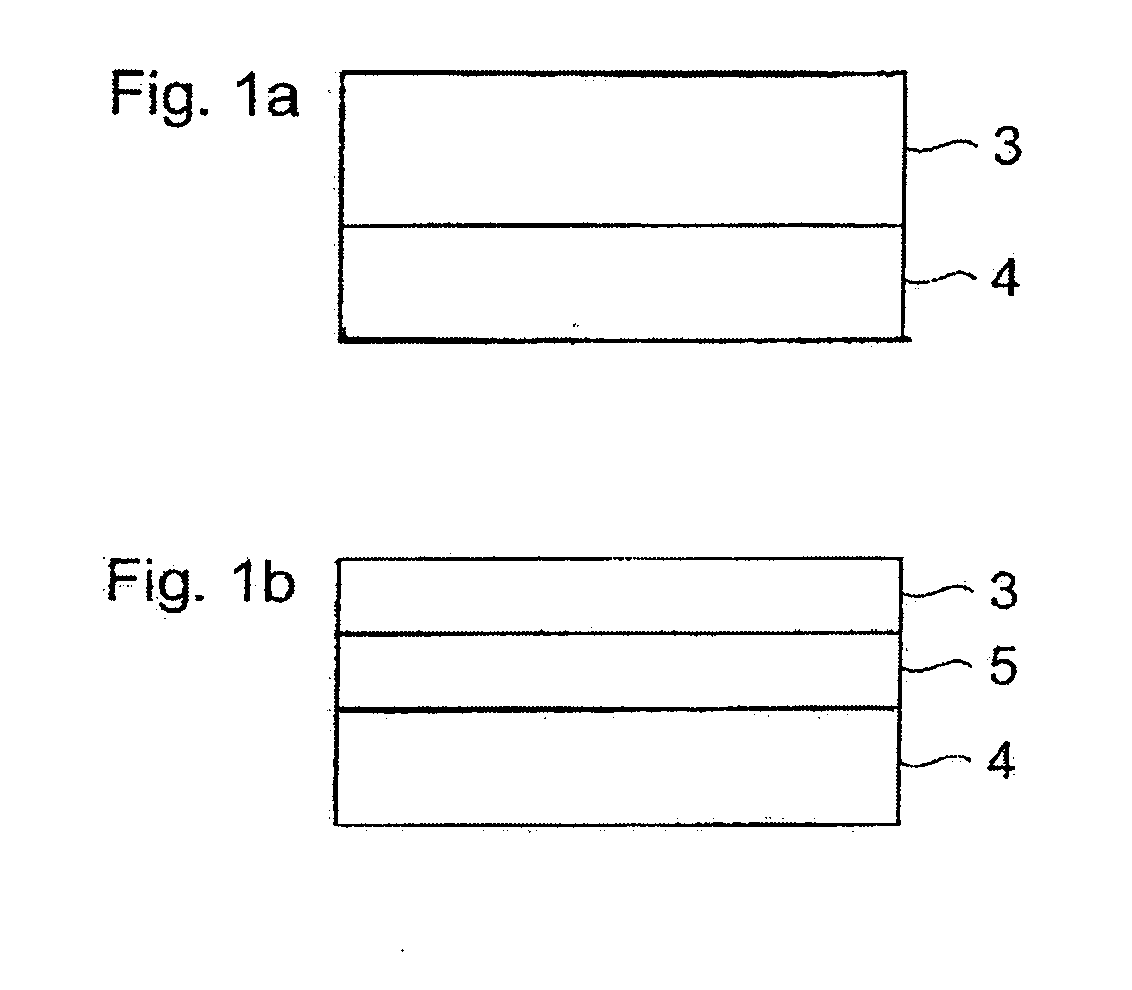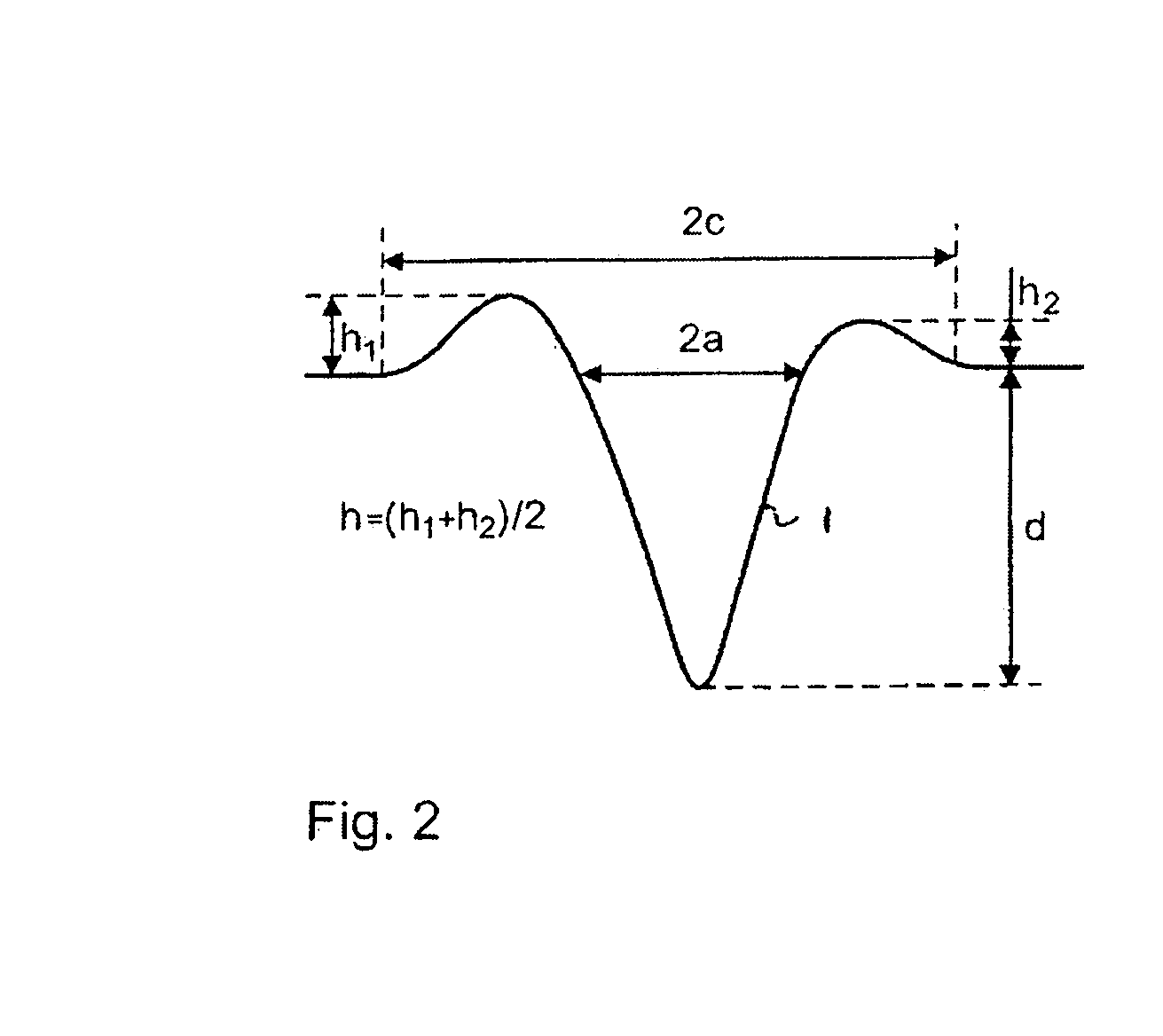Data storage device and method of production therefor
a data storage and data technology, applied in the field of data storage devices, can solve problems such as the lowering of the signal-to-noise ratio (snr) ratio, and achieve the effect of lowering the shear modulus
- Summary
- Abstract
- Description
- Claims
- Application Information
AI Technical Summary
Benefits of technology
Problems solved by technology
Method used
Image
Examples
Embodiment Construction
[0024]Within the description, the same reference numerals or signs are used to denote the same parts or the like.
[0025]As described above, bits are encoded in a data storage medium comprising a polymer layer in the form of indentation marks, each representing a logical “1”, and non-indentation marks, each representing a logical “0”. By way of example, FIG. 2 schematically illustrates a typical profile of an indentation mark 1 formed in a polymer layer. As can be seen from FIG. 2, the indentation mark 1 is a trough formed in the polymer layer having a depth d and inner diameter 2a. Polymer material that is displaced during formation of the indentation mark 1 is deposited in the region surrounding the opening of the indentation mark 1, thereby to form a rim. Displacement of the polymer material typically occurs in a non-uniform manner. In this case, the rim profile would be asymmetric, this being depicted in FIG. 2 by way of the respective heights h1 and h2 of the rim formed around th...
PUM
| Property | Measurement | Unit |
|---|---|---|
| shear modulus | aaaaa | aaaaa |
| thickness | aaaaa | aaaaa |
| glass transition temperature | aaaaa | aaaaa |
Abstract
Description
Claims
Application Information
 Login to View More
Login to View More - R&D
- Intellectual Property
- Life Sciences
- Materials
- Tech Scout
- Unparalleled Data Quality
- Higher Quality Content
- 60% Fewer Hallucinations
Browse by: Latest US Patents, China's latest patents, Technical Efficacy Thesaurus, Application Domain, Technology Topic, Popular Technical Reports.
© 2025 PatSnap. All rights reserved.Legal|Privacy policy|Modern Slavery Act Transparency Statement|Sitemap|About US| Contact US: help@patsnap.com



